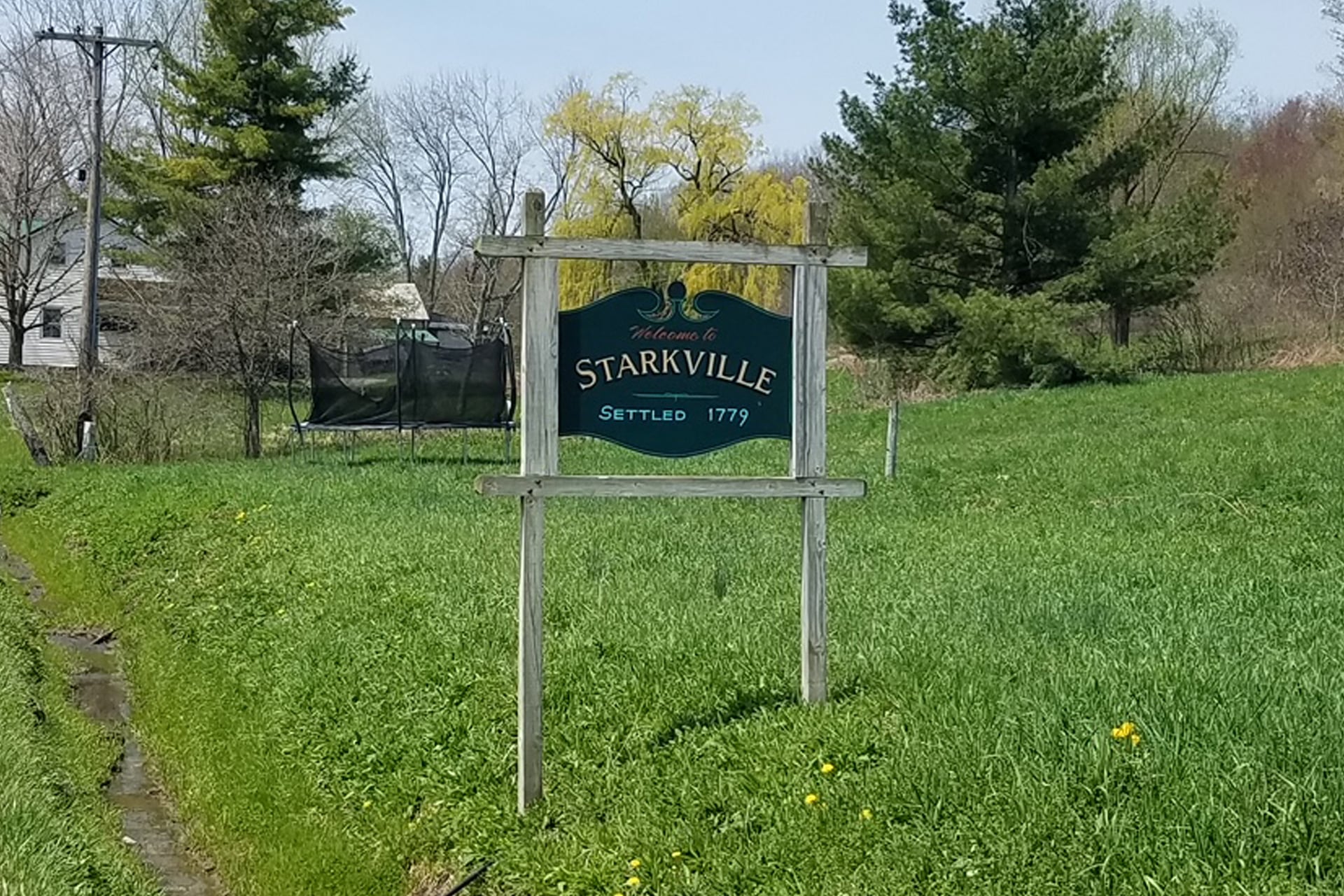Town History
PROFILE AND HISTORY OF THE TOWN OF STARK - from the Gazetteer and Business Directory of Herkimer County, N.Y. 1869-70
STARK, named in honor of General Stark, of the Revolution, was formed from Danube, March 18, 1828. It is the south-east corner town of the County. Its surface is hilly and broken, with a mean elevation of 500 feet above the Mohawk. The principal streams are Otsquago and Nawadaga Creeks. Otsquago Creek flows through a narrow valley, bordered by steep banks from 150 to 200 feet high. The soil is generally a sandy loam in the valleys, and sandy and gravelly on the hills.
Starkville, (p.v.) situated in the north-east part of the town, contains three churches, via., Lutheran, Baptist and Methodist; two hotels, a store, a grist mill, a saw mill, a flax mill, a cheese factory, two cooper shops, several other mechanic shops of various kinds and about 40 dwellings.
Van Hornesville, (p.v.) in the south part of the town, on Otsquago Creek, contains a union church, two hotels, two stores, a cotton factory, a grist mill with three runs of stones, a saw mill, a cheese box factory, a cheese factory, a cigar factory and about 35 dwellings. The creek furnishes an excellent water-power, as it is fed by springs and is affected but little by dry weather.
Bethel, in the west part of the town, contains a Lutheran church, a store, a cheese box factory, a saw mill, several mechanic shops and about twenty dwellings.
Starkville Cheese Factory makes about 250,000 pounds annually; the grist mill contains three runs of stones and grinds about 12,000 bushels, and the saw mill cuts about 200,000 feet annually.
A short distance from Bethel is a beautiful water-fall about forty feet high, upon a stream arising from a single spring. A short distance from the falls is a mineral spring containing iron, and also a sulphur spring which never freezes.
There were two small settlements near the southerly line of the town previous to 1775. One of them was on Otsquago Creek and called the Otsquago Settlement, comprising families by the name of Shall, Bronner and Fetherly. The other settlement was at Kyle, so called, a short distance from the east line of the town of Warren. A family by the name of Eckler were located here; but both settlements were broken up during the war, the inhabitants taking shelter in Fort Plank. Eckler returned to his farm at the close of the war, and the premises have been transmitted from father to son down to the third generation. Among other settlers were families by the name of Walwrath, Young, Van Horne and others.
Abraham Van Horne with his family settled here in 1791, and erected mills at the head waters of Otsquago Creek. It is said that two runs of Esopus (see note below) mill stones for a grist mill were drawn through the woods from the Mohawk River on a wood sled by four horses. Mr. Van Horne came from New Jersey in 1771, and settled in Montgomery County. He was a member of the Tryon County Committee of Safety in June, 1775, was appointed Sheriff in 1781, and was a firm adherent of the American cause.
The first German school was taught by ___ Garner, and the first English school by ___ Haight. As already intimated Mr. Van Horne built the first mills, and his sons kept the first store.
The Baptist Church was organized Nov. 6, 1829, with eleven members.
The Lutheran Church was organized Dec. 9th, 1839. Both societies occupy the same house of worship.
The Methodist Church was organized in 1860 with seventy members. A part of them having since united with the Newville society, the present membership is fifty. The population in 1865 was 1,522; the area is 18,014 acres.
Contacts:
Town Historion: James Cook
Address:
Phone: (518) 993-3506







